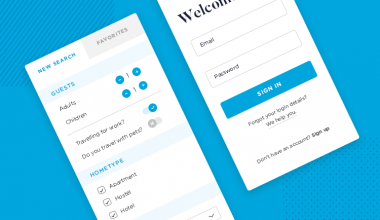A scripting language is a type of programming language that is used to write code for online and mobile apps. Each line of a script is a command that the software, application, or scripting engine must run in order when the script is run. At run time, the interpreter takes these instructions and turns them into machine code that the processor can understand. This article talks about the Python and Java scripting language example. It also discusses programming language vs scripting language. Stay tuned!
Scripting Language Example
There are two main kinds of scripting languages: those that run on the server and those that run on the client. When a user asks for content, like by clicking on a link, the web server runs any scripts that are needed. This code is run before the page is actually loaded. Scripting languages like Perl, Ruby, PHP, and Python all run on a server.
Client-side scripts decide how things like pictures, buttons, and functions work on the user interface. JavaScript is the language that developers use for client-side scripting because it works in almost all browsers. The server sends information to the client side of a website when a user interacts with it, and the client side shows what that information is. The following is the most common example of scripting language and the jobs they do best:
#1. PHP
This scripting language can be used to do things like manage website cookies and databases. It can also be used for more advanced back-end programming, which is part of a program that users don’t have access to.
#2. JavaScript
JavaScript is a scripting language that is used to make websites and apps that work well. They use it to write code that responds to what the user does, like pick options, move through menus, or change the size of the viewport.
#3. Perl
This general-purpose language can be used for system administration, network programming, making graphical user interfaces (GUIs), and building websites.
#4. Ruby
Ruby is a programming language that is used by programmers to make and test web apps that work on specific computer operating systems.
#5. CSS
Web developers and programmers use CSS to tell a website what it looks like.
Python as a Scripting Language
Python is an advanced, analyzed programming language that has dynamic semantics. The dynamic typing and binding, as well as the high-level data structures that come with the language, make it a good choice for use as a scripting language or glue language to connect parts that already exist.
Python’s modules and packages help make programs more modular and make it easier to reuse code. The Python interpreter and its huge standard library are both open-source and free to share. They are available for all major platforms in either source or binary form.
Developers love it because its easy-to-use interface and clear syntax make it possible for them to write programs with much less work and in much less time.
Python is easy to get started with because it is free and open-source. Python has a lot of features and can be used with many different programming languages and paradigms.
It is a high-level language that is read aloud and can be used for a wide range of programming tasks. Guido van Rossum is the name of the person who made it. In 1991, it was given to the public for the first time.
The subject has strong typing skills and is also very active. For the Python scripting language, there are many possible filename extensions, such as.py,.pyc,.pyd,.pyo,.pyw, and.pyz. It follows the OOP paradigm and is functional, procedural, reflective, and imperative in its approach.
The Python Software Foundation continues to improve and update it. All of CoffeeScript, JavaScript, Go, Ruby, Swift, and Groovy had a big impact. It can be used in more than one way of programming. However, it is based on Lisp, a computer language that is known for how well it works. It also works with the AspectJ programming paradigm.
Java Scripting Language
Java Script is a fast scripting language that is based on events. Since its implementations provide the client-side script to interact with the user and create dynamic pages, it is typically included in websites. This interpreted language is built with features for working with objects.
JavaScript used to be called LiveScript, but Netscape changed the name to JavaScript, perhaps because Java was getting so much attention. The first version of JavaScript, which was called LiveScript, came out in Netscape 2.0 in 1995. The core of the language, which can be used for many different things, is already in browsers like Internet Explorer and Netscape.
JavaScript is a type of programming language like ECMAScript, so its syntax is the same. There is also support for first-class functions, dynamic typing, object orientation based on prototypes, and other features.
Java Script, or “JS” for short, is a scripting language that is probably the most well-known one. It is a key part of the modern web (right along with HTML and CSS). In fact, almost all websites on the Internet use JavaScript these days.
Programming Language vs Scripting Language
Look at the most important example differences between scripting language vs programming language:
#1. Software That Works on Multiple Platforms
There is no such thing as a “scripting language” that isn’t a programming language. Scripting languages are platform-dependent, which means that they can only be used in environments that are compatible with the language. “Cross-platform means that the language can be used on more than one platform.
#2. Need to Put Together
Scripting languages are not put into a computer program by being “compiled.” If there are no mistakes in the script, the platform or engine can read it and use it to do what it needs to do. On the other hand, you can’t use a non-script language until it has been compiled. In scripting language vs programming language, a compiler is used to turn these languages into machine code, which is then fed into the program.
#3. How Many Programs Do You Need?
Scripting languages have less code than programming languages because they don’t need to be written correctly or compiled. With this technology, you no longer have to write a lot of code by hand in scripting languages. This is also true when it comes to the size of the code as a whole. Scripting languages let you write small pieces of code that can be used in larger programs to do specific tasks. Programming languages are very long strings of code that contain the whole program.
#4. The Ability to Make Software on Your Own
Programmers can use programming languages to make things like independent software, video games, and apps for phones. Scripting languages can’t be used because they need a runtime environment to understand and execute commands. In this way, scripting languages can make important contributions to a program, but the program still needs to use other languages to work right.
#5. How Fast Something Works
An interpreter software reads each line of code in a script and figures out what it means. If the interpreter platform runs into a problem, the runtime stops until the programmer fixes the problem. For example, if a set of scripts has a lot of errors, the runtime will go up because the scripts will stop running when an error happens and then start again when the error has been fixed.
Since the code has already been compiled by a compiler, running a program written in a programming language usually takes less time than writing the same program in machine code. Effective syntax-checking features in code-writing engines also let programmers and compilers fix mistakes in the code before it is run.
What Scripting Languages Are Used For
Scripting languages can be used to do different things depending on the language being used. Scripting languages can be used in many ways, such as:
#1. Task Automation
Developers often use scripting languages to automate the way tasks are done at runtime. This means writing code that lets users do simple, everyday tasks with software, like sending out a large number of emails or paying bills online.
#2. Content Presentation in a Web Application
Programmers use scripting to make sure that a website’s interactive and functional parts, like graphics and links, are shown correctly on the server.
#3. Orders of What to Do
Scripting languages are used by a lot of programmers to make their code easier to understand and use.
#4. Getting Information
Programmers use scripting languages for many things, such as pulling out data for analysis, research, and statistics.
#5. Web-Based Software That Moves Around a Lot
Developers use server-side scripting languages to show information on the screen that changes based on what the user does or chooses. This kind of information is called “dynamic.”
#6. How to Handle Complex Systems
Administrators use scripting languages to make and get data, direct user requests, and improve systems.
#7. Changes to Games
Modders use scripting languages to add new features and aesthetic touches to game content that improve the base experience.
What Are the Pros of Using Scripting Languages?
Scripting languages are helpful because they let you add more features to your programs and websites in a number of different ways. These languages are much easier to learn than more common programming languages, which could give you an edge over your competitors. Here are some of the most important reasons why you should use scripting languages in your business.
#1. Simple to Understand and Use
People who are interested in programming are often told that these are great places to start. This is because these languages are so much easier to learn and use than others. This means that the needed scripts can be put in place quickly and with little time and effort.
#2. Free and Available to All
Anyone can use scripting languages because they are accessible to everyone.
All that needs to be done is for them to study them and add their skills to their own framework. Since they are all open-source, anyone can add to them and make them better. Also, this helps make the systems that use them safer.
#3. Easy to Change
Because they are smaller, they are easier to read and change.
#4. Improvements in How Users Talk to Each Other
With a scripting language, developers can add animations, gradients, and other visual effects to programs and websites to make them look better.
There Are Cons to Programming in Scripting Languages
Scripting languages are sometimes the best choice, but they aren’t always the best. Before you decide to use a tool, you should think about what’s bad about it. The main problems with using scripting languages in your business are talked about below.
#1. Inability to Optimize
In contrast to how most programming languages are compiled, scripting languages have their compilers look at each statement line on its own, without making any optimizations. This could have an effect on productivity.
#2. Getting Less Done
Also, most script language interpreters are slower than compilers. Most traditional programming languages are first turned into machine code, which makes execution times faster for users.
#3. Prerequisites for a Company
If you use these languages a lot, they could soon take over your app or website.
Extra care must be taken to keep track of which scripts are being used and where they are being kept. If not, it would be a waste of money and time to keep them up.
#4. Putting Time Into Making Changes
Your scripts will need to be updated regularly to make sure they keep working.
This is important whenever big changes are made to browsers or when you make big changes to your own website. For these kinds of translations, you need to know the original language and script very well.
Is Python a Scripting Language?
Yes, Python is a very advanced programming language that is being used to connect large pieces of software. It can be used in many different environments and with many different middleware products. Python is an OO language with high-level data structures and dynamic type and binding.
Which Languages Are Scripting Languages?
Client-side scripting languages include JavaScript, jQuery, and AJAX. Server-side scripting languages include Python, PHP, and Perl. In sysadmin work, scripting languages like Python, Perl, and Shell are often used.
What Is Scripting vs Coding?
Simply put, coding is the process of making a program, while scripting is the process of managing a program that was made with coding.
What Is Scripting vs Programming Language?
Programmers use a special kind of computer language called a “programming language” to talk to a computer. A scripting language’s goal is to make it easier to automate routine tasks in a runtime environment. Using a compiler or being compiled.
Which Language Is Best for Scripting?
Professionals in the field give both JavaScript and Python high marks. Developers use both of them as scripting languages all the time. If you must pick one, Python is the way to go. It’s easy, free, and simple to use and includes development tools.
Is C++ Considered a Scripting Language?
Not at all; C++ is not a language for writing scripts. For C++ programs to run, they must first be “compiled.”
Conclusion
Scripting languages are the way to go, depending on what you need and what’s going on around you. Since they are just a list of commands that can be run without a compiler, they can be used on any computer with just a web browser. They are usually small and quick, and they use source code or bytecode to figure out what they mean.
Related Articles
- WHAT IS SCRIPTING: Meaning, Programming & Cyber Security
- BEST WEBSITE TO LEARN CODING FOR BEGINNERS IN 2023
- PYTHON LOGO: Who Designed the Python Logo and Its Meaning
- FREELANCE DEVELOPER: All You Should Know About It and How to Start Freelancing
- Instant Coffee Brands: The Best Low Acid & Decaf Brands(+Reviews).
- What Is Eld: Meaning, Application & What You Should Know.






